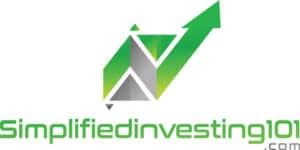
TFSA is often used simply as a savings account. However, returns on savings accounts are historically lower compared to other investments such as stocks and ETFs.
To truly maximize the tax-free feature of TFSA, stocks may offer higher potential returns. However, higher potential returns come with risk, and stocks can drop in value.
Stocks can be invested in a TFSA by opening a self-directed TFSA account, which is offered by most banks and investing platforms. Self-directed TFSA accounts allow people to invest in stocks, ETFs, bonds, and mutual funds.
Investment gains from stocks in a TFSA are tax-free. On the other hand, dividends and capital gains of stocks held on a regular non-registered account are taxable.
1. Open a Self-Directed TFSA Account
TFSA accounts with the big banks, Questrade, and Wealthsimple Trade can hold stocks listed on stock exchanges in US and Canada. Stocks can be bought or sold during market hours. (Mondays to Fridays, 9:30 am to 4:00 pm ET)
Wealthsimple Trade TFSA
- No minimum requirement. Anyone can start with $100 or less.
- $0 commission fees on trades
- 1.50% exchange rate fee for US dollar trades
- Fractional Trading available
- More than 2 Million People have a Wealthsimple account
- Best for Beginners – Platform is simple and easily understandable
Wealthsimple TFSA Tutorial – How to Buy and Sell Stocks
Visit wealthsimple.com for more details. Get a $25 cash bonus when you open a new Wealthsimple account – Create a new account on wealthsimple.com
Questrade TFSA
- Minimum of $1,000 to open an account
- $4.95 commission fees for every stock trade (buy or sell)
- 2% US dollar exchange rate fee
- Questrade is operating for more than 20 years. More than 200,000 new accounts every year
Questrade – How to Buy and Sell Stocks
The tutorial video is done on a Questrade Margin account. The process of how to buy and sell stocks in a Questrade TFSA is the same.
Visit questrade.com for more details. Get $50 in free trades rebate (up to 10 free trades) when you open a new Questrade TFSA account – Create a new account on questrade.com (promo automatically applies)
Stocks vs Savings Account (Compound Interest – $500 Monthly Investment)
| Stocks (Assume 10% returns per year) | Savings account (Assume 2% returns per year) | No investment (Cash – 0% returns) | |
| 1 Year | $6,335 | $6,065 | $6,000 |
| 5 Years | $39,041 | $31,576 | $30,000 |
| 10 Years | $103,276 | $66,470 | $60,000 |
| 20 Years | $382,848 | $147,644 | $120,000 |
| 30 Years | $1,139,663 | $246,773 | $180,000 |
Assumptions: 10% per year vs 2% per year. Actual returns will be different.
Compound interest works best in the long term. In the short term (less than 5 years), the difference is hardly noticed. The difference between investing in the long term is huge. Compound interest is where interest is automatically reinvested and earns interest.
2. Consider starting with Small Capital for a Couple of Months
A small capital of $500 or less may be better than investing larger amounts, especially when investing for the first time. Stocks can be risky. With small amounts of capital, the worst case scenario is you lose a few hundred dollars.
At the same time, you will gain experience and know what it feels like to invest in a few stocks in a TFSA.
Eventually, anyone can add capital to a TFSA when you feel more comfortable investing in stocks.
3. Be aware of the TFSA Contribution Limit
TFSA is mostly tax free. Investment gains, dividends, withdrawals, interest, and deposits are all generally tax free. However, TFSA has a contribution limit. Deposits above the contribution limit are subject to a 1% penalty tax by the CRA (Canada Revenue Agency).
To avoid the penalty, the total deposits to your TFSA accounts must be below your TFSA Contribution Limit. The annual TFSA contribution limit is around $6,000. Your TFSA contribution limit amount can also be found on your CRA My Account.
Any unused TFSA limit from previous will carryforward to future years. For full details, here is an article about TFSA Limit (full examples with examples). – (Insert article link)
4. Consider Diversified Stock Index ETFs in a TFSA
Individual stocks can be risky. Stocks such as Tesla and Shopify have crashed more than 50% in value several times. Also, the worst-case scenario is when a company goes bankrupt, which will make the stock price become $0.
ETFs (Exchange Traded Funds) are often used to invest in a stock index like the S&P 500. The S&P 500 tracks the 500 largest stocks listed on the United States stock exchanges. The returns of the S&P 500 reflect the performance of the 500 stocks.
Diversification through ETFs like the S&P 500 is helpful to minimize risks. In case one of the 500 stocks in the index go bankrupt, this will have a small impact on the investment as there are a total of 500 stocks in the index.
S&P 500 is the most common tracker of how the stock market is performing in a day, several months, or years.
The largest stocks in the S&P 500 includes Amazon, Microsoft, Apple, Netflix, Tesla, and Google (Alphabet) stock. S&P 500 is similar to investing small portions in each of the 500 stocks of the index.
S&P 500 ETFs
- SPY
- VOO
- IVV
- VSP
- XSP
- VFV
- XUS
SPY, VOO, and IVV are a few S&P 500 ETFs listed in US dollars (USD) while VSP, XSP, VFV, and XUS are S&P 500 ETFs that can be traded in Canadian dollars (CAD).
Instead of buying every single stock of the S&P 500, investing in VOO (S&P 500 ETF) will give you returns close to the S&P 500. Should the S&P 500 rise by 10%, these ETFs will also rise by close to 10%. At the same time, these ETFs will also drop close to 10% in case the S&P 500 ETF drop by 10%.
S&P 500 Historical Returns
S&P 500 has returned around 10.31% per year on average in the last 100 years.
Number of Years (89 Years) and Returns of the S&P 500

Source: LPL Financial
Key Takeaways:
- Only 6.7% of years have returns of exactly between 5 to 10 percent
- Two-thirds (66.3%) of the years generated positive returns (above 0% returns).
- One-third (33.7%) of the years generated negative returns (below 0% returns).
- Half (50.6% – 45 out of 89 years) of the years returned more than 10%.
- Half (49.4% – 44 out of 89 years) of the years returned less than 10%.
The chart shows that the yearly returns of the S&P 500 stock market are spread out. While the average is about 10% per year, just about a fifth (20%) of the time the market returns between 5% to 15% on a year. Most of the time (80% of the years), the market returned below 5% or above 15%.
The two extremes (less than 10% and greater than 20% returns) happened on a combined (close to half the time) 48.3% of the years. On a 10-year period, you can expect that 5 of those years will return either greater than 20% or less than 10%.
Thus, the stock market is best for long-term investing since short-term returns are unpredictable.
5. Plan TFSA Investments for the Future
Investing regularly is a solid method to build long-term wealth. Plan ahead how much you are willing to set aside monthly and plan where to invest.
The TFSA Limit is around $6,000 per year which is $500 a month.
A mix of different investments is also possible. You can have multiple TFSA accounts to hold other kinds of investments. For example, most TFSA Savings Accounts earn interest and can also hold GICs to earn a slightly higher return.
Also, TFSA self-directed accounts offer more investment options. Stocks, ETFs, mutual funds, and bonds listed on stock exchanges in the United States and Canada may be accessible on a TFSA account with a Financial Institution in Canada.
TFSA Rate of Return
The rate of return on a TFSA depends on the investments you chose. Stocks, ETFs, and mutual funds in a TFSA can easily gain or lose 10% or more in a year. On the other hand, TFSA Savings Accounts and GICs may have a rate of return of around 1-3% per year.
Stocks (S&P 500 Index) have had an annual average return of about 10% in the last century.
How do I add stocks to my TFSA?
To add stocks to a TFSA, you can open a TFSA account with a stock brokerage in Canada such as Questrade, Wealthsimple, or any of the big banks. TFSA accounts with an investing platform can hold stocks, mutual funds, bonds, ETFs, and other kinds of investments.
Can I buy and sell stocks within my TFSA?
You can buy or sell stocks with a TFSA self-directed account that is offered by most investing platforms in Canada. Self-directed TFSA accounts are offered by the big banks, Wealthsimple, and Questrade. On the other hand, TFSA Savings Accounts cannot hold stocks and are limited to cash.
How does a TFSA work with stocks?
Capital gains and dividends earned from stocks held inside a TFSA are tax-free. Generally, you can sell stocks anytime in a TFSA. You can choose what specific stocks to hold in a TFSA. Also, you can change the stocks you own in a TFSA by selling some stocks to buy other stocks that you decide.
What stocks can be held in a TFSA?
Thousands of stocks listed on the United States and Canadian stock exchanges can be held in a TFSA. European and Asian stocks can also be held in a TFSA, but this may come at a high commission fee and are offered by a few platforms.
How does TFSA grow money?
TFSA can hold investments like stocks, ETFs, mutual funds, and GICs. Investments in a TFSA can grow tax-free since TFSA is mostly exempt from taxes. TFSA will increase in value if the investments you chose inside a TFSA also increase in value.
